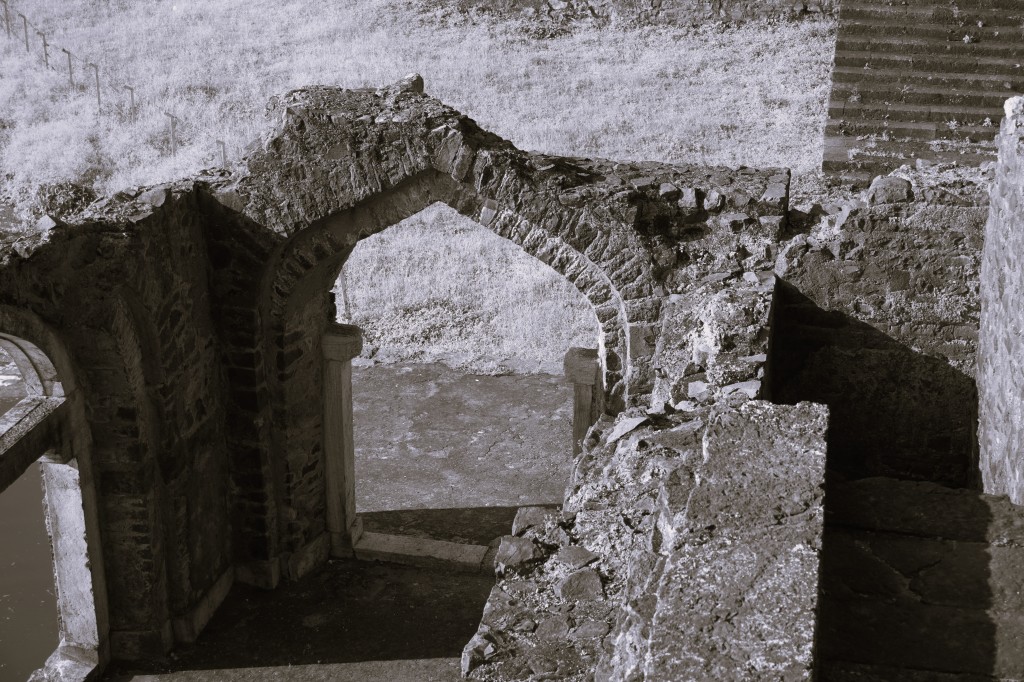Kinara is a lovely film about love, loss and longing; just right for a lazy Sunday afternoon. It released in 1977, which makes it close to 50 years old. The film is written and directed by Gulzar, who also wrote the lyrics, and has music by R. D Burman. Does a film need better credentials than these? Oh, and a lot of it was shot in Mandu; from where I have recently returned. With so much going for it, ek baar (phir se!) dekhna to banta hi hai. This time with a different perspective.

The film stars Hema Malini as Aarti Sanyal, a classical dancer who is in love with Dr. Chandan Arya, a historian (Dharamendra in a pleasing cameo). They are engaged to be married but tragedy strikes when Chandan is killed in a road accident. Enter Inderjit, (Jeetendra in a sober, restrained performance) an architect who is unaware of the turmoil he has caused in Aarti’s life. Aarti and Inder meet in Mandu – the subject of the book that Chandan was researching and writing about. Aarti is there to take photographs of the ruins so that the book can be completed and published.



This is Mandu of 1977, so it is very different from what it is today. The ruins are still the same but the beautifully laid out, manicured grounds are missing as is the landscaped garden and paths. Aarti and Inder wander about the walls of Jahaz Mahal, taking photographs while Aarti tells him the tale of Baaz Bahadur and Roopmati- another love story that ended in tragedy. Aarti has given up dancing, now all she wants is to complete Chandan’s book and get it published. When Inder discovers the unwitting part he played in Aarti’s life, he is stricken with survivor’s guilt, conflicted with his growing feelings for her. This is followed by another unfortunate mishap resulting in Aarti losing her eyesight.
The story then moves to Bombay/Mumbai where Aarti wants nothing further to do with Inder while he tries his best to deserve a place in her life. Hema Malini is in her element as a dancer who loses her eyesight and then learns to dance again. The songs are beautifully rendered- Bhupinder’s deep voice resonates among the walls of Jahaz Maahal and Kishore Kumar’s ‘Jaane kya sochkar nahin guzra’ is an ode to heartache and loss.


Some parts of the film haven’t aged well: those high-waisted bell-bottoms with shirt tucked in or left out, broad, wide ties, the white-haired, widowed ‘chachi’ forever serving ‘chai’ and talking about ‘shaadi’…you get the idea!
Two things did stand out though: the easy intimacy between Aarti and Chandan and the way it came through on screen- quite unusual for a film in the 1970s. The other is Dr Shriram Lagoo’s character as the cool, bachelor uncle of Inder. He’s proficient in Urdu as well as classical music and dance, smokes cigars, plays snooker and gives Inder very practical advice on his love-life. All this in addition to being a caring, supportive friend. The only thing that jarred was when he tells Inder that Aarti will recover from her physical injuries but he may not heal from his mental trauma of guilt and heartache. Really?! So for Aarti, losing her love, her eyesight and her will to dance will not affect her mental well-being? Come on, Gulzar Sa’ab- this was not expected from a writer of your caliber and sensitivity!
To end on a positive note- do watch the film for the songs, the performances and a trip back in time to Mandu, as it must have been 50 years ago.


P.S All pictures taken by me. Yes, filters have been used to get that 1970’s feel. Isn’t technology wonderful?
